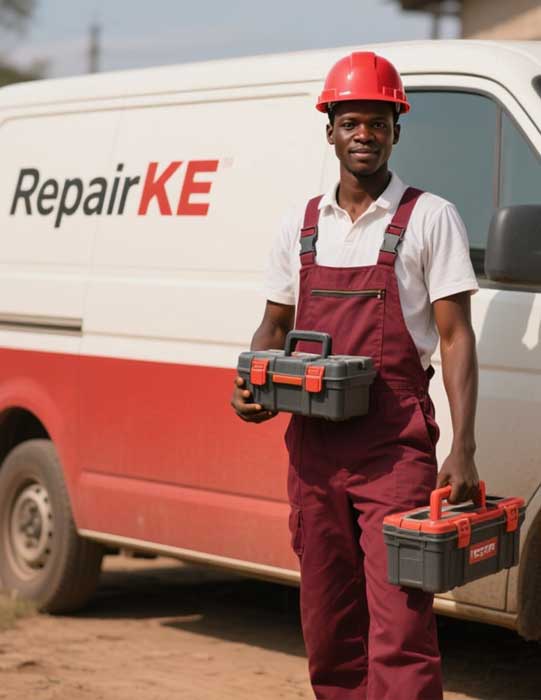
Vacuum Cleaner Repair Tips for Common Faults and Problems
With these troubleshooting tips, you can address many common vacuum cleaner faults and extend the life of your appliance. Regular maintenance and prompt attention to issues like loss of suction, strange noises, or burning smells can prevent costly repairs. If you’re ever in doubt or the problem persists, don’t hesitate to contact a professional repair service like Repair.co.ke for expert assistance.
Vacuum cleaners are essential household appliances, but like any machine, they can develop faults over time. From loss of suction to strange noises, many common issues can be resolved with basic troubleshooting and maintenance. At Repair.co.ke, we’ve compiled a guide to help you diagnose and fix the most frequent vacuum cleaner problems, saving you time and money on professional repairs.
1. Loss of Suction Power
One of the most common complaints is a vacuum cleaner that no longer picks up dirt effectively. Here are some potential causes and solutions:
- Clogged Filters: Dirty or clogged filters restrict airflow, reducing suction. Check both the primary filter (often located near the dustbin or bag) and the HEPA filter (if applicable). Clean reusable filters with warm water and mild soap, ensuring they are completely dry before reinstalling. Replace non-washable filters if they’re too dirty.
- Full Dustbin or Bag: A full dustbin or bag can choke the vacuum’s airflow. Empty the dustbin or replace the bag regularly, ideally after every few uses, depending on usage.
- Blockages in Hoses or Attachments: Inspect the hose, wand, and brush head for blockages. Remove any debris, such as hair or large particles, using a broom handle or a straightened coat hanger (with care to avoid damaging the hose).
- Worn Seals or Gaskets: Check for cracks or wear in the seals around the dustbin or hose connections. Replace damaged seals to restore airtight suction.
Pro Tip: Regularly clean filters and empty the dustbin to maintain optimal performance. If suction issues persist, inspect the motor or consult a professional.
2. Vacuum Won’t Turn On
If your vacuum cleaner doesn’t start, the issue could stem from electrical or mechanical problems:
- Power Supply Issues: Ensure the vacuum is plugged into a working outlet. Test the outlet with another device to rule out electrical issues. For cordless models, check if the battery is charged or properly seated.
- Damaged Power Cord: Inspect the cord for fraying, cuts, or exposed wires. If damaged, replace the cord (consult the manufacturer’s guidelines or a professional for safety).
- Faulty Switch: A malfunctioning power switch may prevent the vacuum from starting. Test the switch with a multimeter (if you’re comfortable with electronics) or seek professional help.
- Overheating Protection: Many vacuums have a thermal cutoff that activates if the motor overheats. Let the vacuum cool down for 30–60 minutes before trying again.
Pro Tip: Avoid wrapping the cord too tightly when storing, as this can damage the internal wires over time.
3. Strange Noises or Vibrations
Unusual noises like grinding, rattling, or screeching often indicate mechanical issues:
- Debris in the Brush Roll: Hair, strings, or small objects wrapped around the brush roll can cause rattling or grinding. Remove the brush roll (refer to your manual) and clear any debris. Lubricate bearings with a small amount of machine oil if they’re stiff.
- Loose or Broken Parts: Check for loose screws or broken components in the brush head, motor housing, or attachments. Tighten screws or replace damaged parts.
- Worn Belt: Upright vacuums often use a belt to drive the brush roll. A worn or stretched belt can cause squealing. Replace the belt if it appears cracked or loose (most models have easy-to-access belt compartments).
- Motor Issues: Persistent loud noises may indicate motor problems. This requires professional diagnosis, as motor repairs can be complex.
Pro Tip: Regular maintenance, like clearing the brush roll after each use, can prevent noise-related issues.
4. Burning Smell
A burning smell is a serious concern and should be addressed immediately:
- Overloaded Motor: Overloading (e.g., vacuuming heavy debris like coins or small toys) can strain the motor, causing a burning odor. Stop using the vacuum and clear any blockages.
- Worn Belt: A slipping or frayed belt can produce a burnt rubber smell. Replace the belt following the manufacturer’s instructions.
- Electrical Faults: A burning smell could indicate a short circuit or damaged wiring. Unplug the vacuum immediately and contact a professional technician.
Pro Tip: Never ignore a burning smell, as it could pose a fire hazard. Always unplug the vacuum before inspecting.
5. Brush Roll Not Spinning
If the brush roll (also called the beater bar) isn’t spinning, it can reduce cleaning efficiency, especially on carpets:
- Tangled Debris: Hair or threads wrapped around the brush roll can prevent it from turning. Carefully cut away debris with scissors, avoiding damage to the bristles.
- Broken or Slipped Belt: Check the belt connecting the motor to the brush roll. Replace it if it’s broken or loose.
- Motor or Drive Issues: If the belt and brush roll are fine, the motor or drive mechanism may be faulty. This typically requires professional repair.
Pro Tip: For models with a carpet/hard floor switch, ensure the vacuum is set to the correct mode, as some settings disable the brush roll.
6. Short Battery Life (Cordless Vacuums)
For cordless vacuum cleaners, reduced runtime is a common issue:
- Battery Degradation: Most batteries lose capacity over time. If your vacuum’s runtime has significantly decreased, consider replacing the battery (check compatibility with the manufacturer).
- Dirty Contacts: Dust or corrosion on battery contacts can reduce performance. Clean contacts with a dry cloth or cotton swab.
- Overuse in High-Power Mode: Using max power mode constantly drains the battery faster. Reserve high-power settings for tough messes and use standard mode for regular cleaning.
Pro Tip: Store cordless vacuums in a cool, dry place and avoid leaving the battery fully discharged for long periods to extend its lifespan.
General Maintenance Tips
To keep your vacuum cleaner in top shape and prevent faults:
- Regular Cleaning: Clean filters, empty the dustbin, and clear the brush roll after every few uses.
- Check for Wear: Inspect hoses, belts, and seals periodically for signs of wear and replace as needed.
- Follow Manufacturer Guidelines: Refer to your vacuum’s manual for model-specific maintenance tips and part replacements.
- Avoid Overloading: Don’t vacuum large debris, wet surfaces (unless the vacuum is designed for it), or fine powders like flour, which can clog filters or damage the motor.
When to Call a Professional
While many vacuum cleaner issues can be fixed at home, some problems require expert attention:
- Persistent motor issues or unusual noises after troubleshooting.
- Electrical faults, such as damaged wiring or circuit issues.
- Complex repairs on high-end or bagless models with intricate components.
At Repair.co.ke, we recommend tackling simple fixes yourself but reaching out to a trusted technician for major repairs to avoid further damage.
Happy cleaning, and keep your vacuum running smoothly!
Repair.co.ke – Your trusted partner for home appliance repairs in Kenya.




